Abstract
461 second chromosomes of Drosophila melanogaster were extracted from a Raleigh, N.C. population and four enzymes controlled by the genes located in this chromosome (alcohol dehydrogenase (EC 1.1.1.1.), malate dehydrogenase-1 (EC 1.1.1.37), glycerol-3-phosphate dehydrogenase-1 (EC 1.1.1.8), and α-amylase (EC 3.2.1.1), were assayed electrophoretically and cytologically (salivary-gland chromosomes). Linkage disequilibrium could not be detected among any pair of isozyme genes, except in one case that is best explained as due to a chance error in estimation. Some disequilibria were detected, however, between isozyme genes and polymorphic inversions. The relative viabilities of homozygous and heterozygous combinations of these chromosomes were estimated with respect to the alcohol dehydrogenase alleles and the glycerol-3-phosphate dehydrogenase alleles; no significant difference could be detected. The role of epistasis in natural populations is discussed on the basis of these results.
Full text
PDF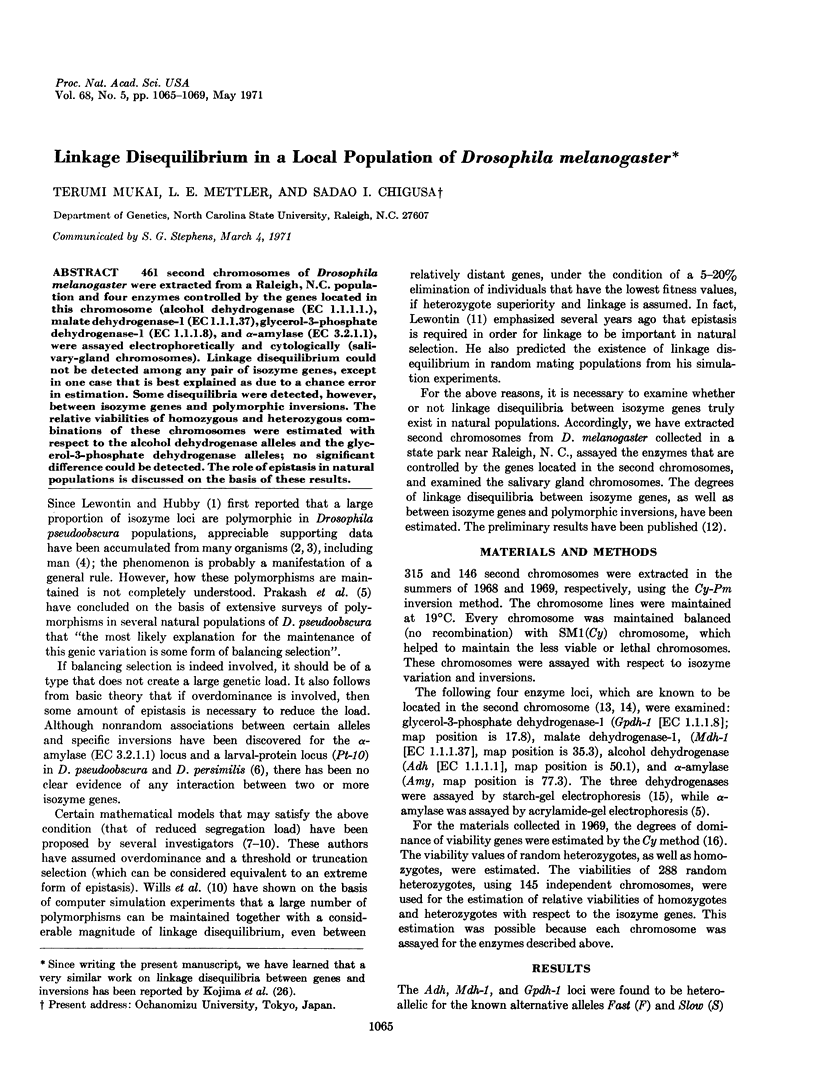
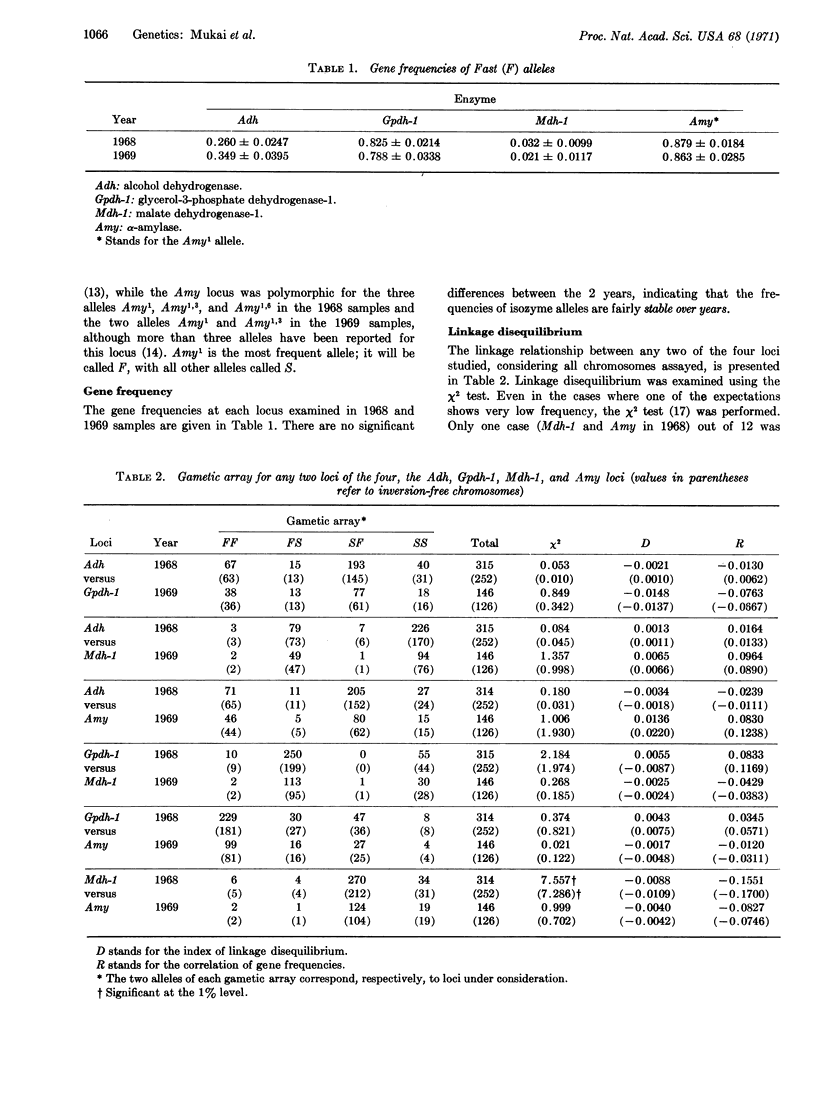
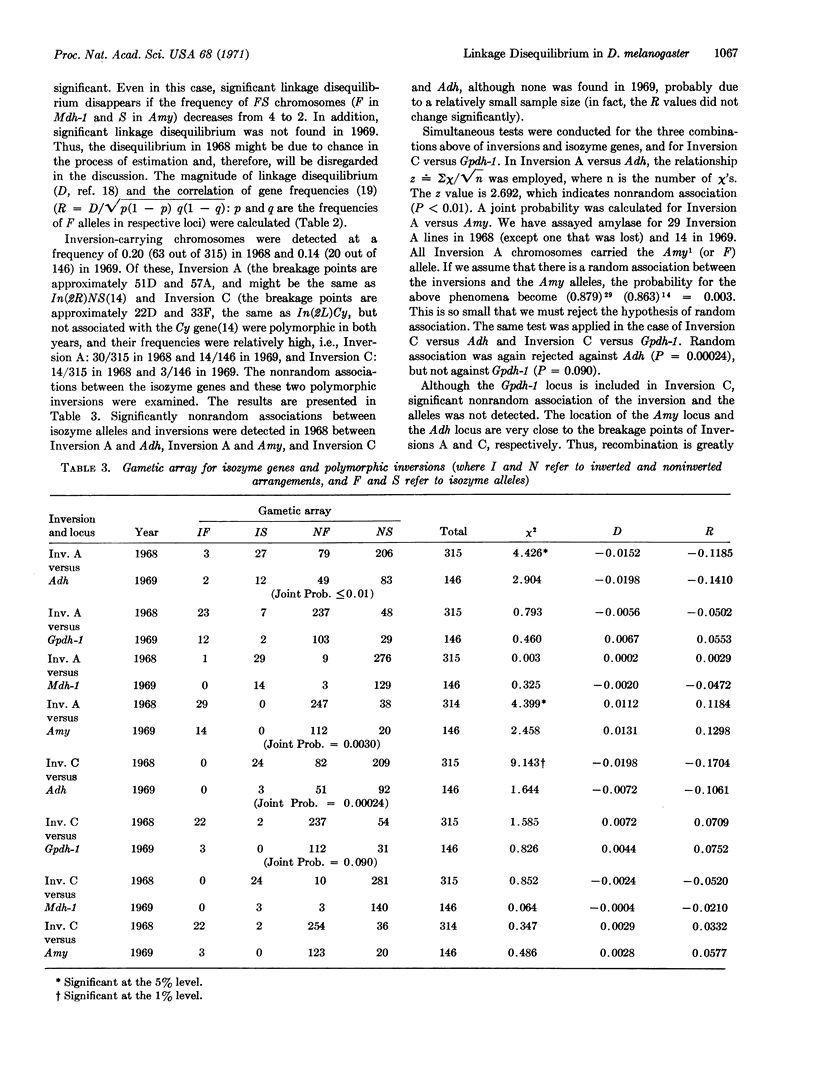
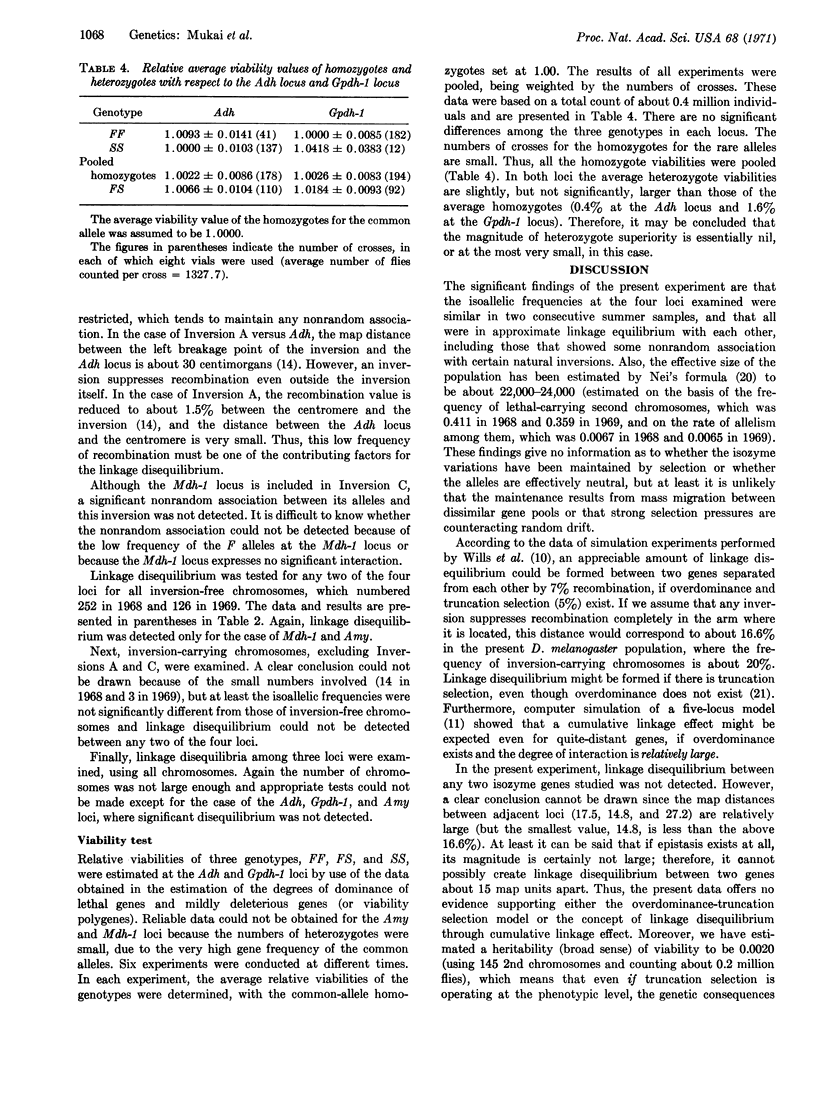
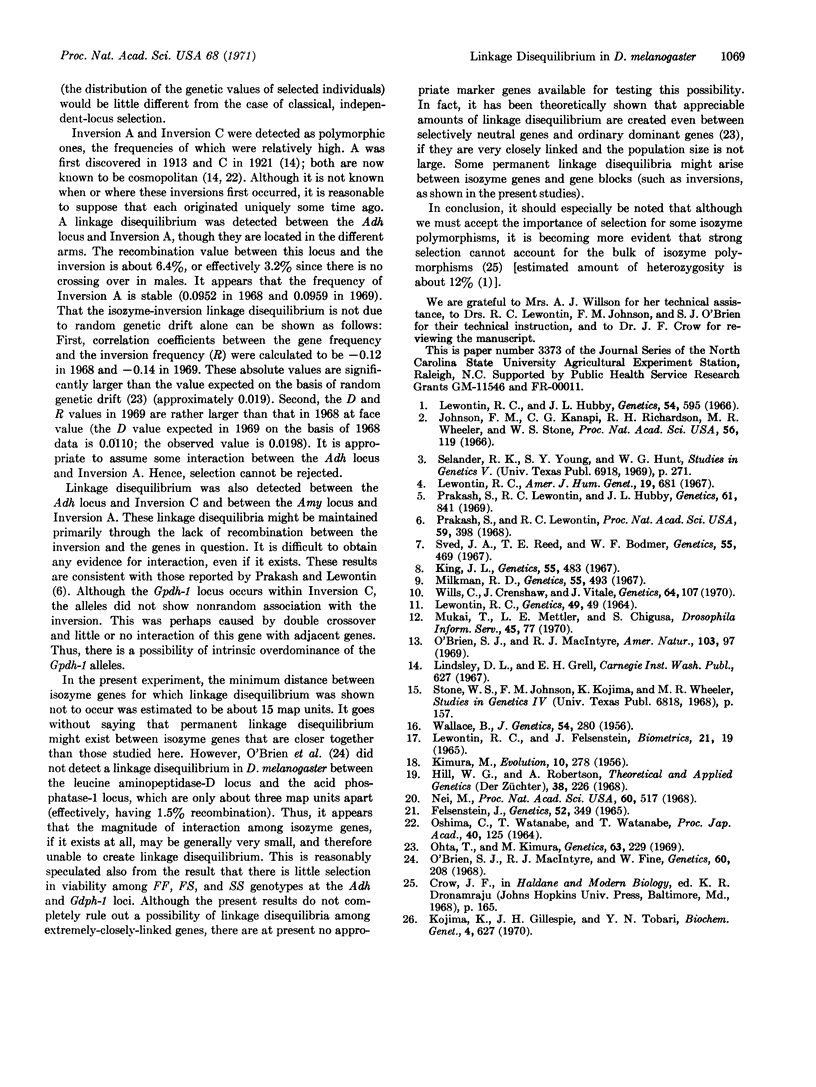
Selected References
These references are in PubMed. This may not be the complete list of references from this article.
- Felsenstein J. The effect of linkage on directional selection. Genetics. 1965 Aug;52(2):349–363. doi: 10.1093/genetics/52.2.349. [DOI] [PMC free article] [PubMed] [Google Scholar]
- Johnson F. M., Kanapi C. G., Richardson R. H., Wheeler M. R., Stone W. S. An analysis of polymorphisms among isozyme loci in dark and light Drosophila ananassae strains from American and Western Samoa. Proc Natl Acad Sci U S A. 1966 Jul;56(1):119–125. doi: 10.1073/pnas.56.1.119. [DOI] [PMC free article] [PubMed] [Google Scholar]
- King J. L. Continuously distributed factors affecting fitness. Genetics. 1967 Mar;55(3):483–492. doi: 10.1093/genetics/55.3.483. [DOI] [PMC free article] [PubMed] [Google Scholar]
- Kojima K., Gillespie J., Toari Y. N. A profile of Drosophila species' enzymes assayed by electrophoresis. I. Number of alleles, heterozygosities, and linkage disequilibrium in glucose-metabolizing systems and some other enzymes. Biochem Genet. 1970 Oct;4(5):627–637. doi: 10.1007/BF00486100. [DOI] [PubMed] [Google Scholar]
- Lewontin R C. The Interaction of Selection and Linkage. I. General Considerations; Heterotic Models. Genetics. 1964 Jan;49(1):49–67. doi: 10.1093/genetics/49.1.49. [DOI] [PMC free article] [PubMed] [Google Scholar]
- Lewontin R. C. An estimate of average heterozygosity in man. Am J Hum Genet. 1967 Sep;19(5):681–685. [PMC free article] [PubMed] [Google Scholar]
- Lewontin R. C., Hubby J. L. A molecular approach to the study of genic heterozygosity in natural populations. II. Amount of variation and degree of heterozygosity in natural populations of Drosophila pseudoobscura. Genetics. 1966 Aug;54(2):595–609. doi: 10.1093/genetics/54.2.595. [DOI] [PMC free article] [PubMed] [Google Scholar]
- Milkman R. D. Heterosis as a major cause of heterozygosity in nature. Genetics. 1967 Mar;55(3):493–495. doi: 10.1093/genetics/55.3.493. [DOI] [PMC free article] [PubMed] [Google Scholar]
- Nei M. The frequency distribution of lethal chromosomes in finite populations. Proc Natl Acad Sci U S A. 1968 Jun;60(2):517–524. doi: 10.1073/pnas.60.2.517. [DOI] [PMC free article] [PubMed] [Google Scholar]
- Ohta T., Kimura M. Linkage disequilibrium at steady state determined by random genetic drift and recurrent mutation. Genetics. 1969 Sep;63(1):229–238. doi: 10.1093/genetics/63.1.229. [DOI] [PMC free article] [PubMed] [Google Scholar]
- Prakash S., Lewontin R. C. A molecular approach to the study of genic heterozygosity in natural populations. 3. Direct evidence of coadaptation in gene arrangements of Drosophila. Proc Natl Acad Sci U S A. 1968 Feb;59(2):398–405. doi: 10.1073/pnas.59.2.398. [DOI] [PMC free article] [PubMed] [Google Scholar]
- Prakash S., Lewontin R. C., Hubby J. L. A molecular approach to the study of genic heterozygosity in natural populations. IV. Patterns of genic variation in central, marginal and isolated populations of Drosophila pseudoobscura. Genetics. 1969 Apr;61(4):841–858. doi: 10.1093/genetics/61.4.841. [DOI] [PMC free article] [PubMed] [Google Scholar]
- Sved J. A., Reed T. E., Bodmer W. F. The number of balanced polymorphisms that can be maintained in a natural population. Genetics. 1967 Mar;55(3):469–481. doi: 10.1093/genetics/55.3.469. [DOI] [PMC free article] [PubMed] [Google Scholar]
- Wills C., Crenshaw J., Vitale J. A computer model allowing maintenance of large amounts of genetic variability in mendelian populations. I. Assumptions and results for large populations. Genetics. 1970 Jan;64(1):107–123. doi: 10.1093/genetics/64.1.107. [DOI] [PMC free article] [PubMed] [Google Scholar]


